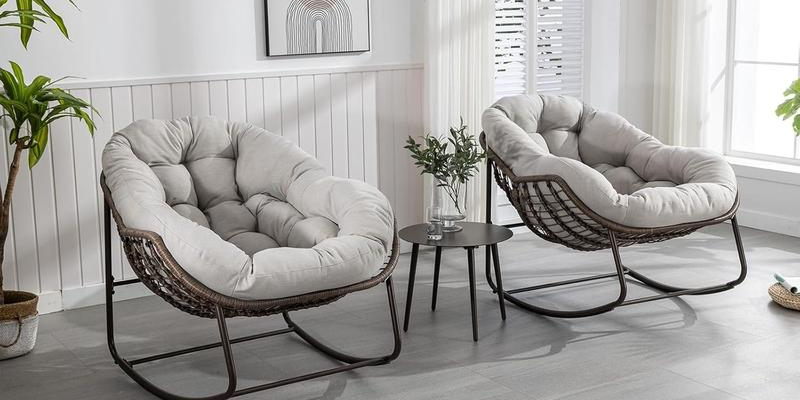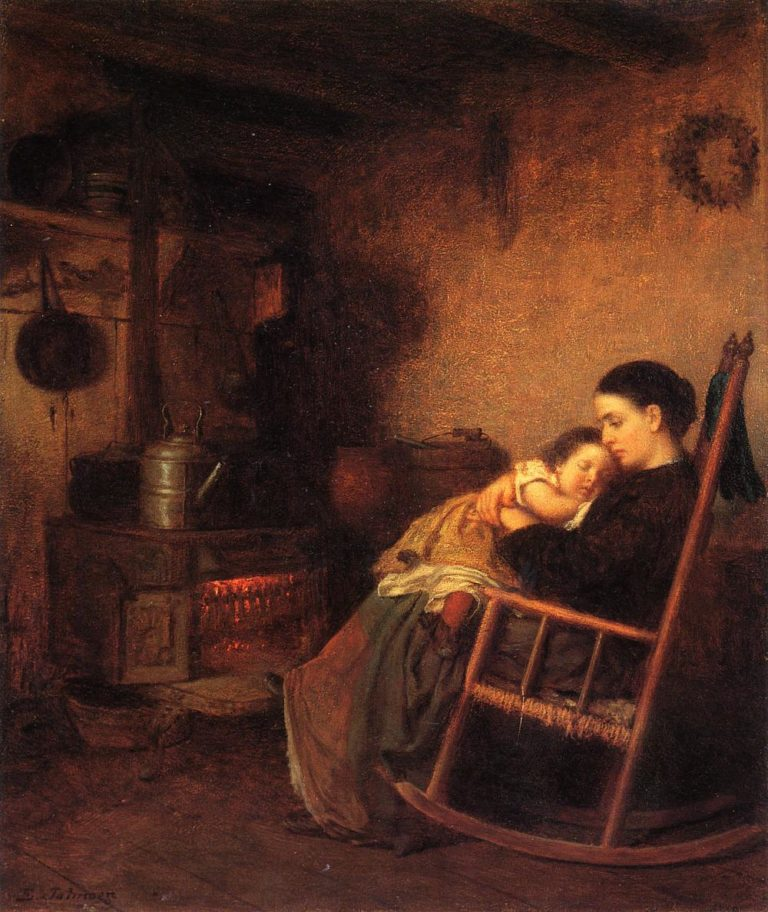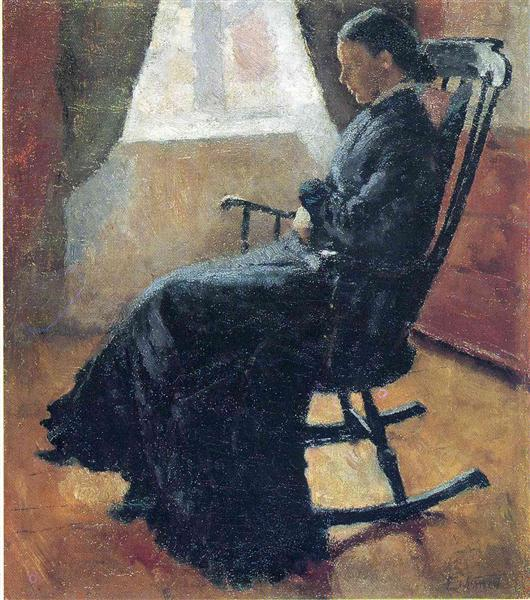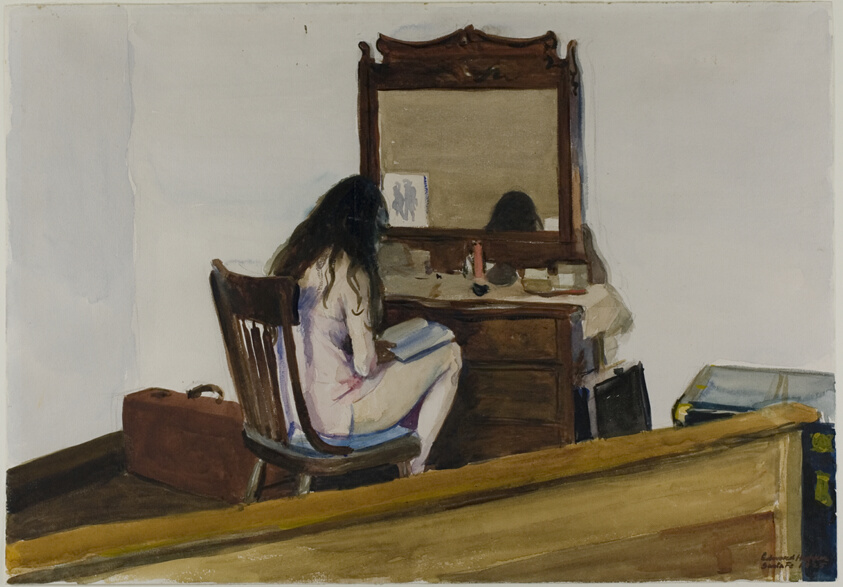In the hustle and bustle of modern life, each of us yearns for a peaceful haven. Imagine, after a long day at work, you return home and sink into a comfortable rocking chair, gently swaying to let your body and mind unwind completely. It’s not just a pleasure, but an art of living.
In the vast realm of art, the rocking chair transcends its practicality as furniture, becoming a bearer of emotions and the spirit of the times. It is not just a part of home life, but also a symbol that artists use to express their inner world and reflect societal changes. The rocking chair is more than just a piece of furniture; it carries the weight of emotions, mirrors the changes of the era, and serves as an important medium for artists’ emotional expression and cultural exploration.
The Allure of the Rocking Chair in Art
Eastman Johnson’s “Mother and Child” depicts the warm scene of a 19th-century American family. The mother, seated in a rocking chair and holding her child, conveys the warmth of maternal love and the tranquility of home. The rocking chair here is not only a place for interaction between mother and child but also a symbol of family harmony. It reflects the 19th-century emphasis on family values and the high regard for the role of motherhood.
Edvard Munch’s “Aunt Karen in the Rocking Chair” shows another side of the rocking chair—solitude and introspection. In the painting, Munch’s aunt sits in a rocking chair, her expression contemplative, seemingly lost in her own thoughts. The rocking chair becomes an external manifestation of her inner world, reflecting the character’s sense of loneliness and profound contemplation of life. This work embodies the Nordic culture’s attention to individual emotions and psychological states from the late 19th to the early 20th century.
In the painting titled “The Rocking Chair,” Sir John Lavery portrays a lady in a black dress. She sits on an exquisite rocking chair, her posture and expression conveying elegance and composure, while her black dress adds an air of mystery and solemnity.
Lavery uses his signature Impressionist style in this painting, enhancing the visual effect through color contrast and the use of light and shadow, to express the dynamism and liveliness of the scene. Through this painting, we can catch a glimpse of the lifestyle and cultural atmosphere of European society at the turn of the 19th to the 20th century.
Edward Hopper’s “Interior” takes us into the modern life of the 20th century. In the “Interiors” series, the rocking chair often accompanies solitary figures, symbolizing feelings of loneliness. Hopper intensifies the sense of solitude through the isolated presence of the rocking chair, allowing viewers to feel the emptiness and longing in the characters’ hearts. The rocking chair here acts as an amplifier of emotions, making the characters’ emotional states more vivid and intense.
Hopper’s interior works often feature static indoor spaces with light streaming in through windows, creating a stark contrast of light and shadow. This tranquil atmosphere resonates with the quiet introspection often conveyed by rocking chairs in artistic works. Hopper conveys the loneliness and alienation of modern life through the contrast of light and shadow and the meticulous depiction of indoor objects.
In “Woman in Rocking Chair,” Kline conveys the dynamic sense of the rocking chair through abstract lines and shapes. This abstract mode of expression is a typical feature of Abstract Expressionism, emphasizing the direct expression of emotions and the display of personal style.
The creative background reflects the changes in American society in the mid-20th century. During this period, Abstract Expressionist artists tried to express personal emotions and understandings of the world through their art. Kline’s work, through its abstract approach, reveals his profound insight into everyday life scenes, reflecting the society’s emphasis on individual expression and innovation at the time.
These works collectively showcase the diversity and richness of the rocking chair in art. From 19th-century family life to 20th-century modern life, from realism to abstract expressionism, the rocking chair has always been an essential element for artists to express emotions and explore artistic expression. It is not just furniture but also a symbol of emotions, a companion in solitude, a guardian of tranquility, and a witness to modern life.
If you also wish to enjoy the dual pleasures of comfort and art in your home,TikTok Shop offers the perfect solution: a selection of rocking chairs that perfectly blend tradition with modernity. Each piece not only adds an artistic touch to your home but also brings boundless comfort. Whether you’re looking for a quiet corner for reading or a private space to relax and unwind, TikTok Shop has what you need. Let’s immerse ourselves in the tranquility and artistry that rocking chairs provide, savoring every moment of life’s beauty.
Now come to TikTok Shop’s magical rocking chair, choose a rocking chair that belongs to you, let art and comfort go hand in hand, and enjoy every moment of life.















Comments